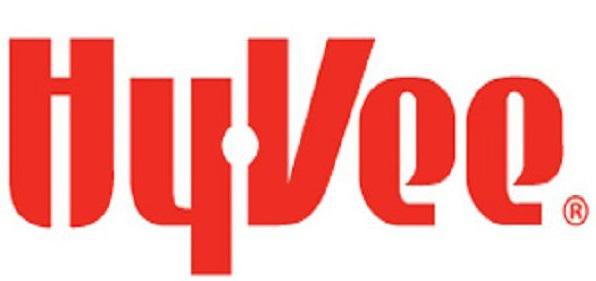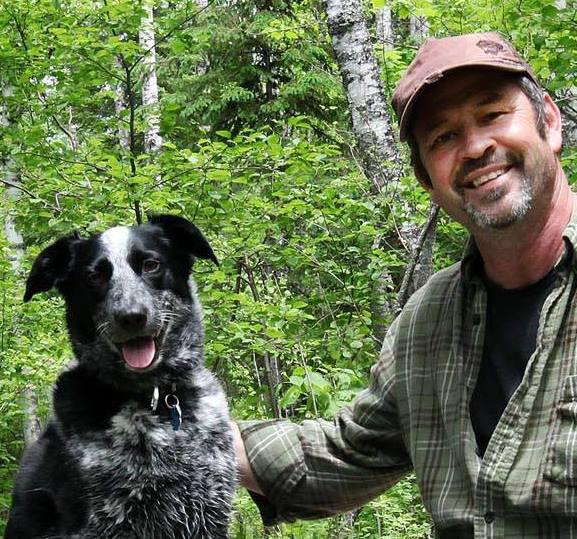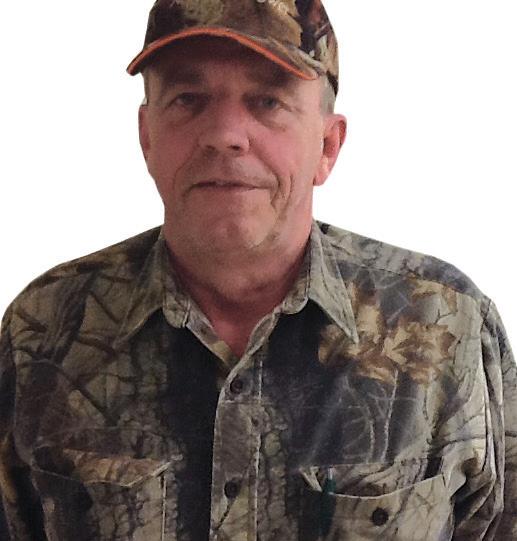








Giving Back Strategically During the Holidays
As the holidays approach, so, too, do the appeals for charitable gifts. If you’re like many people, your mailbox and inbox are already filled with messages from nonprofits asking for your financial support before the end of the year. As much as we want to help worthy causes, we each have a finite amount of money that we can afford to give away without jeopardizing our financial security.
Deciding which charities to support and at what level can feel overwhelming, but as with most things, it comes down to planning and prioritization. Here are some tips to keep in mind to help you give strategically and maximize the impact of your gifts.
Giving intentionally
As you consider how to
allocate your money, you should answer these important questions:
• Do I have a close connection to the organization? Donating to causes close to home can be one of the most effective and fulfilling means of giving. This can include school groups, food shelves, youth programs, libraries, and churches.
• If not, do I have a passion for the charity’s mission? If you are not closely connected to the charity, you should look into how its mission aligns with your own values.
• Is the organization’s reputation strong? You want to feel comfortable in the leadership of the charity, whether it manages its finances prudently and if it can be trusted with your money.
These are key general questions to help you assess the best use of your charitable dollars. After you determine where and how much to give, it’s worthwhile to explore the potential tax savings you could potentially reap.
The tax question
The reality is that the tax benefits of giving have changed dramatically for most people. The Tax Cut and Jobs Act of 2017 raised the standard deduction to a point where the vast majority of Americans are better off claiming that form of deduction rather than choosing to itemize deductions on their tax returns. Those who itemize may be able
to deduct the value of most charitable gifts from their income in the tax year in which the gift is made. While modest charitable gift deductions were allowed for all taxpayers in 2020 and 2021, that is not the case in 2022.
One potential alternative, depending on your age, is a Qualified Charitable Distribution (QCD) directly from an IRA to qualified charitable organizations. You must be age 70-1/2 or older to execute a QCD, but it is one way to fulfill required minimum distribution rules if they apply to you. Since the distribution goes directly to your selected charities, you don’t have to claim the income. That has the same effect as taking a tax deduction for the gift. You can gift up to $100,000 per year using this strategy (or $200,000 for a married couple filing a joint return).
More than money

If you’re in a giving spirit, but have a tight budget this year, keep in mind that many organizations also benefit from the contributions of time that individuals make. Volunteers are critical to the success of most non-profit groups. Helping them deal with day-to-day tasks of their operations, serving on governing boards, and assisting in fundraising efforts are a few of the ways you can give your time to benefit a charitable group.
As you prepare to give
this holiday season, don’t forget to put a plan in place to help maximize your donation – whether money or time.
Duane J Lusson, CFP, ChFC, CLU, MSFS, is a Private Wealth Advisor with Ameriprise Financial Services, Inc. in Ottumwa, Iowa. He specializes in fee-based financial planning and asset management strategies and has been in practice for 30 years. To contact him, call 641-684-4200 or stop by his office at 527 W. Second in Ottumwa, Iowa.

Ameriprise Financial, Inc. and its affiliates do not offer tax or legal advice. Consumers should consult with their tax advisor or attorney regarding their specific situation.
Investment advisory products and services are made available through Ameriprise Financial Services, LLC, a registered investment adviser.
Investment products are not insured by the FDIC, NCUA or any federal agency, are not deposits or obligations of, or guaranteed by any financial institution, and involve investment risks including possible loss of principal and fluctuation in value.

Ameriprise Financial Services, LLC. Member FINRA and SIPC.
© 2022 Ameriprise Financial, Inc. All rights reserved. File # 5079970-RUSH

We are creatures of habit with established routines that we practice at certain times of each day: A routine for getting up (which will vary depending on if it’s a school/workday or a day off.) We have a routine for dinner time and a routine for getting ready for bed. I even have a routine for feeding Nova Mae and Edgar Allan. Our routines can be altered a little to meet the moment’s needs, but they
are seldom eliminated.






While Nova Mae and I have been working in Florida for the past couple of weeks, my wife Melissa, and our cat Edgar Allan, have been visiting her parents in South Carolina.

As a result, my routines have been altered with 650 miles between us, but they still get carried out.





When I get up in the morning, at home or on the road, I say my daily prayers, go for a short walk with Nova, then make breakfast. Breakfast is supposed to be the most important meal of the es day for people and pets.

I usually put a scoop of kitty crunchies in Edgar’s bowl first to keep him from meow-

ing and waking my wife. (I’m not supposed to, but I usually sneak a “Greenie” treat for Edgar to enjoy with his breakfast.) Next, I give Nova Mae her breakfast, then fix mine. But, of course, pets are no different than people because they have their routines, too.
Edgar will eat the treat first, then his cat food. If he drops a piece of food outside his bowl, he will look for it until he finds it. Nova is a rather fussy eater who prefers to have all her food on the floor before eating.
First, Nova will sniff the food in her bowl, then walk away and follow me to see what I’m having, just in case there is a better offering. She goes through this routine daily, whether at home or on the road.
At home, I eat oatmeal each morning; when traveling, it’s Cheerios. Regardless of where I am, I like fresh fruit in my cereal.
While preparing my breakfast, Nova Mae will stay at my feet in case something falls on the floor. We don’t give her “people food,” but Nova does get healthy treats like fresh fruit and veggies.
The dog loves blueberries, so I give her a couple. She waits patiently as I remove the tops from the strawberries; she likes the fruit and the little green leaves. Nova likes apples and raspberries too. She will tolerate an orange slice, although citrus is not her favorite.
Nova really likes carrots, beans, and peas.
I can’t think of a fruit or veggie she doesn’t like. Oh yes, kiwi. Nova doesn’t care for kiwis - or cucumbers, but she will practically do backflips for a piece of banana.
Bananas have a distinctive smell that draws her attention any time of day. Even if she is sound asleep, Nova can hear a banana being peeled (or, more likely, she smells it) and comes trotting into the kitchen with anticipation to claim her share. Likewise, if I am slicing a banana on cereal or just eating one, she knows she will get the last piece; we call this the banana butt.
I squeeze easily on the outside of the peel, and the last piece will come loose, just like pinching the tail on a shrimp. Nova will gently nibble inside the peel to get that last bite. I’ve created a banana monster.
One day while traveling, I stopped to fill the van with gasoline. Unfortunately, the pump was out of paper, so I had to go inside for a receipt. Near the register, there was a display of bananas. They were on sale; sixty-nine cents each, two for a dollar. Usually, bananas aren’t discounted until they have brown spots and are nearly ready to make banana bread. But these were beautiful, bright yellow bananas at a great price. So, I grabbed two, paid for them, and walked back to the van.
I set the fruit on the dashboard and boasted what a great deal I got on bananas. “We will share them later,” (Just the Other Day cont’d on pg 4)

I told Nova. Then, I started to drive away. “Darn it,” I said, “I was so excited about the bananas that I forgot to get my gas receipt.”

Nova and I shared a good laugh about that.
I pulled into a parking space and ran inside. The cashier held up a slip of paper, “You forgot your receipt.” We were soon on the road again. Nova was tired and went to the back of the van to sleep. About fifteen minutes later, I reached for a banana, but they were gone!
Both of them! I glanced behind me. Nova was not sleeping.
While I was in the Cstore, Nova swiped both bananas, stashing them in the back. She had them hidden under a packing blanket like buried bones. Then, she waited until I was driving to dig in. “Nova Mae! Stop eating those bananas,” I ordered. She glanced up at me, then delightfully resumed chowing down on a banana as if she didn’t hear me.
“Nova, leave it,” I said more firmly, but the dog has selective hear-
ing. I was worried that she would get sick, so I pulled off the interstate at the next exit, parking on the shoulder. I was too late. The dog was a satisfied mess.

Nova is a fussy eater. She shredded the peels but didn’t eat them. Instead, Nova had gnawed through the skins, eating the inside of both bananas. The floor was covered with disgusting banana goop. Nova had banana mush all over her face and in her fur. Like a little kid with chocolate all over their face and hands, she was contently licking her paws.
I got very nervous when her tummy gurgled and contracted several times. “You better not do it,” I warned her. Fortunately, it was just a burp, but bananas have a distinct smell. “That’s really nasty, Nova.” I wiped up the floor with Windex and a paper towel. Then wetted a towel with my bottled water to clean her fur. Nova had a queasy look on her face.
“If you throw up in this van, you’re going to be in big trouble, dog.”


Not trusting the look on her face, I fastened her leash, and we went for a walk. Nova didn’t get sick; as soon as I was fairly sure she wasn’t going to, we got back on the road. I learned that day not to leave bananas where Nova can reach them; two whole bananas will give a puppy a bad case of the trots.
About twenty minutes later, Nova came up between the front seats. “Dad, I don’t feel so good.” So, we pulled over. Twenty minutes later, “Dad, my tummy hurts.” So, we pulled over. Twenty minutes later, “Dad, I think I have to go again.” So, we pulled over again. Twenty minutes later, “Dad.….”
“That’s what you get for stealing my bananas,” I told her as we pulled off at the next exit. I laughed at her, “Girl, you done gave yourself a bad case of banana butt!” (Acceptable grammar as we were in the south.) Then, I assured her, in jest, “This, too, shall pass.” We shared a good laugh about thatthen pulled over again.

Macho Dog
After the hunt the other day, a couple of friends and I were standing around shooting the breeze as is required. A good hunt requires more talk than walk. Eventually, the conversation got around to dogs. It is a guy thing, especially for a hunter, to have a dog.
The macho image would just not be the same without one.
One guy’s dog was Jake, the other’s, Bud. My dog’s name is Billie. That is a good solid name. I was holding my own in the arena of macho until we got around to what kind of dogs they were. Jake is a lab, Bud is a German Short-hair, and Billie is a poodle. When the laughter subsided, I explained, poodles really are


hunting dogs. They are about the size of labs and were originally bred as water dogs. They make excellent retrievers for duck and goose hunters. I do not happen to hunt ducks and geese, so Bille is a bit confused about what to hunt. Last spring was his first experience with geese.
We were walking along the lake shore and spotted a pair of geese with ten or twelve goslings on the lawn in front of the cabin. At we got close, they headed into the pond. Ancestral instincts must have been triggered in Billie and he thought he needed to retrieve the geese. He bounded down the hill, jumped into the water, and started swimming after the closest one.
Apparently unaware the goose is supposed to be shot before retrieving, he was startled when the old gander turned on him. With flapping of wings and much honking, he chased Billie back to shore, much faster than he had gone out. He has since not gone
into the water after a goose or for any other reason. He has thought retrieved other things. Our morning routine consists of my letting him out to do the necessary things while I get the get the mail, feed the livestock, and drink coffee. I let him back in the house when I head downstairs to the office. It is early when I am leaving, so in the darkness and my semi-somnolent state, I do not always notice all the details I probably should.
One day last week, Billie caught a chipmunk and brought it in the house when I was leaving. As I went downstairs to the office, the dog thought it appropriate to show his trophy to my wife who was still sleeping. Billie’s pacing the floor and whining caused my wife to finally open one eye to see a large happy dog holding a furry critter in his mouth.
During the somewhat incoherent yelling, I was able to determine the animal was indeed a chipmunk, it was dead, my wife was not happy, and the dog thought he
had done something wonderful. This was not a good day for the relationship between my wife and Billie. It did not help to explain that I thought chipmunks hibernated or that it was at least dead and not running around the house. Things did not improve yesterday. I made it all the way to town when I got a call from my wife about another furry forest creature in the house.
Billie had caught a mole or a vole, I am
still not sure which, and had deposited it inside the back door.

He at least had learned the folly of his ways, and not awakened my wife with his prize. I have also learned the error of my ways, and will thoroughly search the dog when he comes in. He is learning to hunt, sometimes not at the appropriate time or the proper game, but he is going to be as macho as the next dog.


